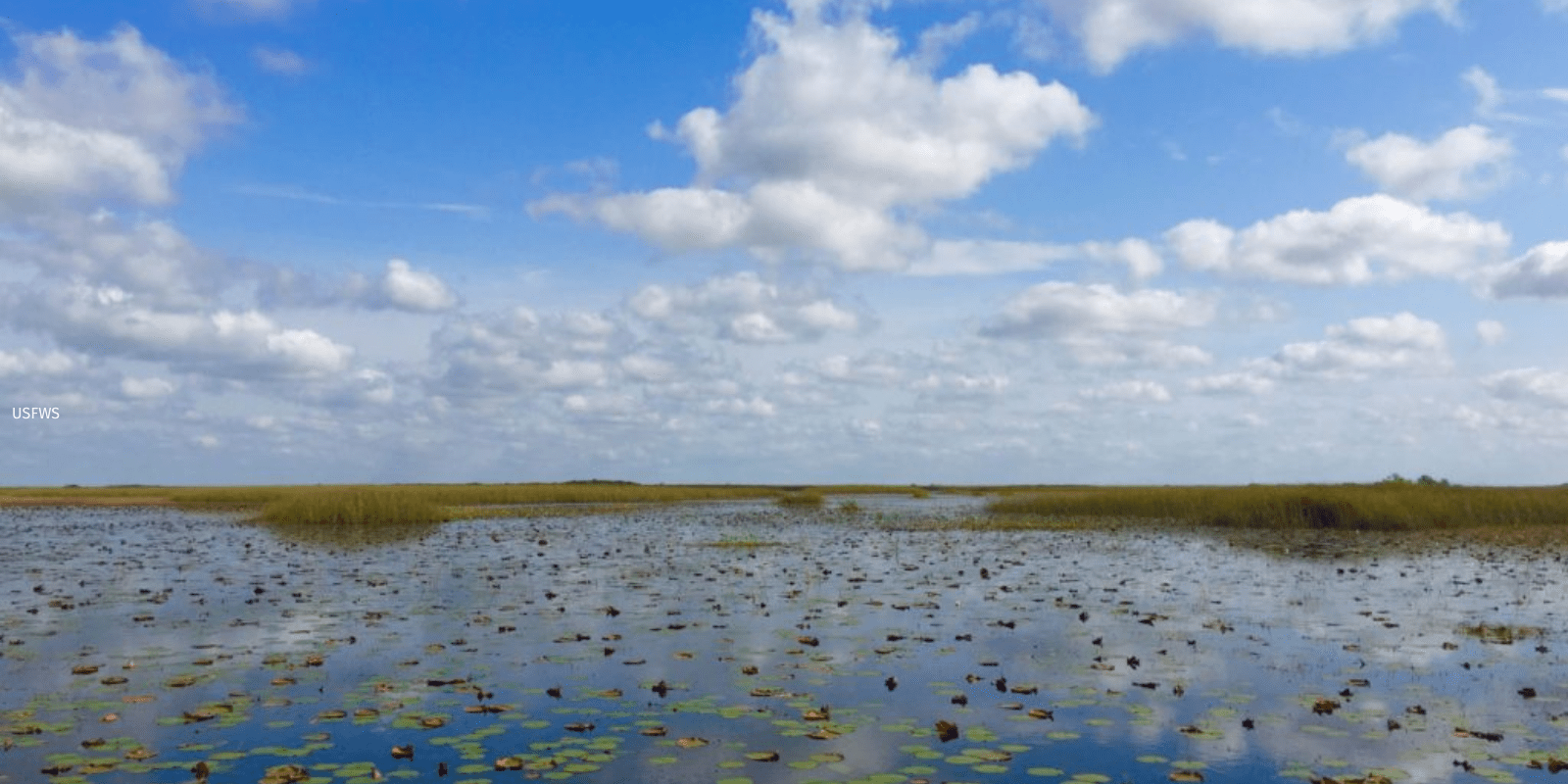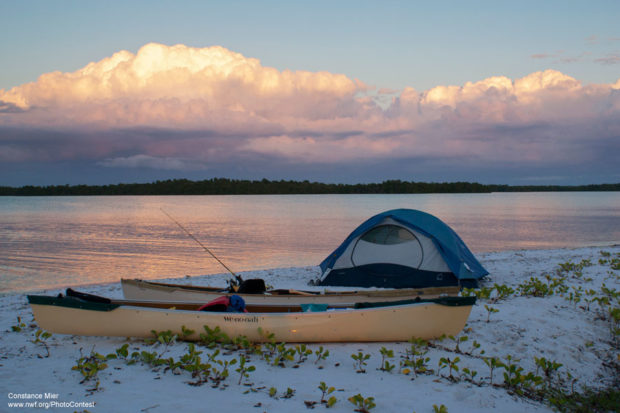We have much more to do and your continued support is needed now more than ever.
Restoring America’s Everglades

In Florida, everything from wildlife to tourism runs on clean water and in South Florida, that means the Everglades. America’s Everglades once covered some three million acres – a shallow “river of grass” slowly flowing from headwaters near the center of the state all the way south through what is now Everglades National Park and Florida Bay. Currently, less than half of this ecosystem remains.
The Everglades remains a national treasure that roughly a million people visit each year to see native wildlife like the Florida panther, kayak through the Ten Thousand Islands, and fish the waters of Florida Bay. Over 8 million Floridians rely on the Everglades for their drinking water supply. It’s also the first line of defense against hurricanes and storms.
Because of this, the health of the Everglades is directly tied to Florida’s economy. Tourism contributes $85.9 billion to Florida’s economy each year. The state’s $58.6 billion outdoor recreation economy sustains over 480,000 jobs and Florida’s recreational fishing and boating economy is the largest in the nation.
The very quality that makes South Florida so special – for anglers, tourists, and locals alike – is the same thing we’ve disrupted: water. Lake Okeechobee – the liquid heart of the Everglades – is now cut off from the southern Everglades and Florida Bay. The lake’s now-polluted waters are diverted to the east and west coasts, fueling toxic algae outbreaks both in the lake and delicate coastal estuaries, with not enough freshwater reaching the southern parts of the ecosystem.

When clean water doesn’t flow where it’s supposed to and when, Florida’s wildlife and economy suffer. In 2018, toxic blue-green algae and red tide killed wildlife and robbed coastal communities of millions in lost revenue over just a few months. Hard-hit cities of Sanibel, Captiva, and Fort Myers Beach reported combined losses of $87 million between July and December 2018. The toxic slime closes beaches and businesses, tourists cancel vacations, fishermen lose their catch, fishing guides lose trips, and property values suffer. Scientists say the polluted water from Lake Okeechobee and released down the Caloosahatchee River likely exacerbated the red tide that devastated the Gulf Coast in 2018.
Wildlife also loses. The man-made system of canals and water control structures have reengineered the way water flows through South Florida, making it more difficult for wading birds to find fish during the nesting season. South Florida just experienced the driest March on record in nearly 90 years, prompting widespread fires across the state. Though fires occur naturally in the Everglades, prolonged drought like this allows fires to burn too hot and quickly, killing mature cypress trees and burning up peat.
The drought has reduced nesting habitat for snail kites, making it the worst nesting season for snail kites since 2010. Low freshwater flows made Florida Bay, the estuary at the southernmost tip of the Everglades, was saltier than the ocean for a time. These extreme salty conditions can cause the estuary’s seagrasses to die, harming the wildlife that rely on beds of seagrass for food and shelter and clouding the typically crystal-clear water. Dry conditions last year forced threatened wood storks to wait too long to start nesting, and when strong rains finally came this May, water levels rose so rapidly that their fish prey became too dispersed, and many storks were unable to find enough food to feed their chicks.
Although the rainy season in Florida has finally begun, this year’s drought shows how important it is to restore America’s Everglades. Everglades restoration projects like the Everglades Agricultural Area Reservoir, designed to store excess water south of Lake Okeechobee, and raising Tamiami Trail, which currently blocks the flow of water south, will help make sure enough water is available during dry periods for the Everglades, wildlife, and communities alike. These projects will give water managers the flexibility they need to store and clean water from Lake Okeechobee and send water south to rehydrate the Everglades and Florida Bay.
As the country grapples with the ongoing public health and economic crises from the COVID-19 pandemic, investing in Everglades restoration is more important than ever. Congress should direct relief and recovery spending towards restoring America’s natural resources. These investments will create jobs and help make communities more resilient in the face of hurricanes, fires, and floods.
Implementing the plan to restore the Everglades alone will create more than 440,000 jobs, ranging from construction to the tourism industry, which has been particularly hard-hit during the current pandemic. Additionally, for every dollar invested in restoring the Everglades, four dollars are generated in return, by increasing wildlife watching, fishing, hunting, and outdoor recreation opportunities, improving property values, and safeguarding the region’s drinking water supply.
Directing stimulus spending towards restoring healthy wetlands, rivers, and streams will be essential to jump starting both local and national economies, while ensuring that vital, on the ground conservation work can continue, creating jobs now and providing relief to the communities whose economies rely upon places like the Everglades.
Help spread the word and retweet!






















